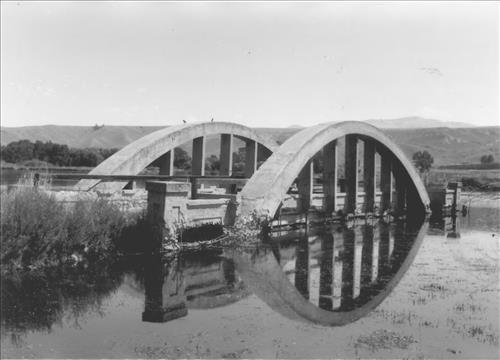In 1913 Deer Lodge County officials decided to build a bridge to span Silver Bow Creek, appropriating $2,067.88 for materials and $265 to H. B. Grant for design specifications. The bridge made passable the county road between the nearby Milwaukee Railroad Morel Substation and the community of Anaconda. The county’s decision to build the bridge reflected a national initiative known as the Good Roads Movement, an effort to improve rural and in-town highways. In Montana, many “Good Roads” infrastructure improvements were the work of prisoners from the state penitentiary. In 1914, the year inmates completed construction of the Morel Bridge, over one-third of Montana’s inmates were employed in work camps, primarily building roads. Praised for its strength, economy of materials, and low cost, the Morel Rainbow Arch Bridge is patterned after the Marsh Rainbow Arch Bridge, patented by J. B. Marsh of Iowa in 1912. The design was particularly suited to the use of prison labor because it could be built primarily by unskilled workers. During the 1920s and 1930s, the Montana Department of Highways designed and built numerous concrete bridges, but this rainbow arch concrete bridge is the only one of its kind in Montana. The bridge was abandoned in 1916 when the Anaconda Mining Company—which owned the surrounding land—built Pond 2, one of a series of settling ponds that separate old Highway 10 and the interstate. Today, Atlantic Richfield, a BP affiliated company, maintains the water treatment facilities and the State of Montana manages the site for wildlife and recreational use.
Images
